The Path of Purification? No, my friend. Ratha-vinita Sutta (Chariot Relay Sutra) teaches us not to confuse the seven purifications, with the destination, Nirvana
Although our teachers often drill hard on the theme of “just practice” and “I cannot practice for you” and “the greatest offering is your practice” — never-the-less Sutra cautions us against confusing practice with our goal of Nirvana or Enlightenment. Our teachers also push hard on “purification practices”: in Therevadan Buddhism often characterized as the “seven purifications”; in Vajrayana similarly taught in the Lamrim, stages of the path (which adds Bodhichitta practices.) [Note: Full Ratha-vinita Sutta at end of this feature.]
The first three Purifications align directly with the three trainings in Pali Canon:
- Training in moral virtue (sila sikkha) — which restrains body and mind
- Training in mental concentration (samadhi sikkha) — which creates mental calmness
- Training in wisdom (panna sikkha) — which overcomes wrong views. [1]
The Seven Purifications

Rathapvinata Sutta is the first time the seven purifications are mentioned — and for each of the seven purities, there is, of course, a “practice” — outlined below. While these seven purifications are the path to Nirvana, the Sutta cautions us not to confuse the path with the goal. It also teaches us that the path is a “relay”, where we attain accomplishments in a specific order; in other words, we must attain the first purity before we move on to the second. Interestingly, the commentaries point out that the first six of these relay points are “accompanied by clinging” (upādāna sampayutta). [1] In other words, grasping and attachments remain with us almost to the very end, the final Purity of Knowledge and Vision.
Also, just as in a “relay race” we do not win the race by reaching the first, second or third baton passing — you have to actually reach the finish line after passing the baton seven times — and if you miss a baton passing you’re disqualified. In other words, the all-important purities are not “goals” — rather they are dependencies, relay points along the path:
(1) Purity in terms of virtue (sīla,visuddhi)
(2) Purity in terms of mind (citta,visuddhi)
(3) Purity in terms of view (ditthi,visuddhi)
(4) Purity in terms of the overcoming doubt (kankha, vitarana,visuddhi)
(5) Purity in terms of knowledge and vision of what is and what is not the path (maggâmagga,ñana,dassana,visuddhi)
(6) Purity in terms of knowledge and vision of the way (patipada nana, dassana, visuddhi)
(7) Purity in terms of knowledge and vision (nana, dassana, visuddhi)

The seven relay points are:
- To attain anything on the path, we must first attain Purity in terms of virtue
- To attain purity in terms of mind, we must first attain purity of virtue
- To attain purity in terms of view, we must first attain purity of mind
- To attain purity in terms of overcoming doubt, we must firs attain purity of view
- To attain purity in terms of knowledge and vision of what is and what is not the path, we must first attain purity in terms of overcoming of perplexity
- To attain purity in terms of knowledge and vision of the way, we must first attain purity in terms of knowledge and vision of what is and what is not the path
- To attain purity in terms of knowledge and vision we must first attain purity in terms of knowledge and vision of the way.
Practicing the Purifications
What practices are generally associated with each “relay” point? Most of us are still struggling with the first or second relay stop: purity of virtue or purity of mind. If we’re having trouble with “purity of mind” (concentration exercises), it might be because we haven’t yet mastered “purity of virtue.” The practices generally taught (in short form) to help us attain each Purity:

(1) Purity in terms of virtue
Practice: keeping of the precepts and moral virtue
(2) Purity in terms of mind
Practice: access concentration and full concentration to overcome the five hindrances
(3) Purity in terms of view
Practice: Understanding physical phenomenon, the five aggregates of a living being
(4) Purity in terms of the overcoming doubt
Practice: Discernment practices
(5) Purity in terms of knowledge and vision of what is and what is not the path
Practice: Discrimination practices and true insight into impermanence and not-self
(6) Purity in terms of knowledge and vision of the way
Practice: Insight into supramundane paths
(7) Purity in terms of knowledge and vision
Practice: Knowledge of the four supramundane paths (4 levels of accomplishment below “Arhathood”) [1]
“No, my friend”
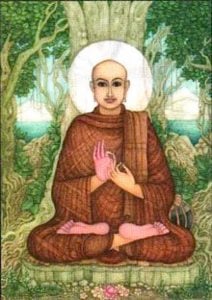
The Sutta tells of an exchange between two very learned and Venerable monks, Sariputta, and Punna Mantaniputta, in which, over and over, Venerable Punna says “no, my friend” in response to seven questions posed by Sariputta. Basically, the way Sariputta poses his questions makes each of the “purities” seem like a goal — to which Punna correctly answers “no, my friend.” The dependencies are obvious near the end of the Sutra:
“In the same way, my friend, purity in terms of virtue is simply for the sake of purity in terms of mind. Purity in terms of mind is simply for the sake of purity in terms of view. Purity in terms of view is simply for the sake of purity in terms of the overcoming of perplexity. Purity in terms of the overcoming of perplexity is simply for the sake of purity in terms of knowledge and vision of what is and is not the path. Purity in terms of knowledge and vision of what is and is not the path is simply for the sake of purity in terms of knowledge and vision of the way. Purity in terms of knowledge and vision of the way is simply for the sake of purity in terms of knowledge and vision. Purity in terms of knowledge and vision is simply for the sake of total Unbinding through lack of clinging. And it’s for the sake of total Unbinding through lack of clinging that the holy life is lived under the Blessed One.”
MN 24
PTS: M i 145
Ratha-vinita Sutta: Relay Chariots
translated from the Pali by
Thanissaro Bhikkhu
I have heard that on one occasion the Blessed One was staying near Rajagaha in the Bamboo Grove, the Squirrels’ Sanctuary. Then a number of monks from the [Blessed One’s] native land, having completed the Rains Retreat in the native land, went to the Blessed One and, on arrival, having bowed down to him, sat to one side.
As they were sitting there, the Blessed One said to them, “Monks, whom in our native land do the native-land monks — his companions in the holy life — esteem in this way: ‘Having few wants himself, he gives talks to the monks on fewness of wants. Contented himself, he gives talks to the monks on contentment. Secluded himself, he gives talks to the monks on seclusion. Unentangled himself, he gives talks to the monks on non-entanglement. Having aroused persistence in himself, he gives talks to the monks on arousing persistence. Consummate in his own virtue, he gives talks to the monks on becoming consummate in virtue. Consummate in his own concentration, he gives talks to the monks on becoming consummate in concentration. Consummate in his own discernment, he gives talks to the monks on becoming consummate in discernment. Consummate in his own release, he gives talks to the monks on becoming consummate in release. Consummate in his own knowledge & vision of release, he gives talks to the monks on becoming consummate in the knowledge & vision of release.[1] He is one who exhorts, informs, instructs, urges, rouses, & encourages his companions in the holy life.'”
“Lord, the monk named Punna Mantaniputta (Mantani’s son) is esteemed by the native-land monks — his companions in the holy life — in this way: ‘Having few wants himself, he gives talks to the monks on fewness of wants. Contented himself, he gives talks to the monks on contentment. Secluded himself, he gives talks to the monks on seclusion. Unentangled himself, he gives talks to the monks on non-entanglement. Having aroused persistence in himself, he gives talks to the monks on arousing persistence. Consummate in his own virtue, he gives talks to the monks on becoming consummate in virtue. Consummate in his own concentration, he gives talks to the monks on becoming consummate in concentration. Consummate in his own discernment, he gives talks to the monks on becoming consummate in discernment. Consummate in his own release, he gives talks to the monks on becoming consummate in release. Consummate in his own knowledge & vision of release, he gives talks to the monks on becoming consummate in the knowledge & vision of release. He is one who exhorts, informs, instructs, urges, rouses, & encourages his companions in the holy life.'”
Now at that time Ven. Sariputta was sitting not far from the Blessed One. The thought occurred to him: “It’s a gain, a great gain for Ven. Punna Mantaniputta that his knowledgeable companions in the holy life speak his praise point by point in the presence of the Teacher, and that the Teacher seconds that praise. Maybe sometime or other I, too, will go to meet with Ven. Punna Mantaniputta; maybe I’ll have some conversation with him.”
Then the Blessed One, having stayed at Rajagaha as long as he liked, set out wandering to Savatthi. Wandering by stages, he arrived there and stayed in Jeta’s Grove, Anathapindika’s monastery. Ven. Punna Mantaniputta heard, “The Blessed One has arrived at Savatthi and is staying near Savatthi in Jeta’s Grove, Anathapindika’s monastery.” Setting his lodgings in order and taking his robes & bowl, he set out wandering to Savatthi. Wandering by stages, he went to where the Blessed One was staying in Jeta’s Grove, Anathapindika’s monastery. On arrival, having bowed down to the Blessed One, he sat to one side. As he was sitting there, the Blessed One instructed, urged, roused, & encouraged him with a Dhamma talk. Then Ven. Punna — instructed, urged, roused, & encouraged with the Blessed One’s Dhamma talk; delighting & approving of the Blessed One’s words — got up from his seat, bowed down to the Blessed One, circumambulated him, and went to the Grove of the Blind for the day’s abiding.
Then a certain monk went to Ven. Sariputta and, on arrival, said to him: “Friend Sariputta, the monk named Punna Mantaniputta whom you have so often praised — instructed, urged, roused, & encouraged with the Blessed One’s Dhamma talk; delighting & approving of the Blessed One’s words — has gotten up from his seat, bowed down to the Blessed One, circumambulated him, and has gone to the Grove of the Blind for the day’s abiding.” So Ven. Sariputta quickly picked up a sitting cloth and followed right behind Ven. Punna, keeping his head in sight. Ven. Punna plunged into the Grove of the Blind and sat down in the shade of a tree for the day’s abiding. Ven. Sariputta also plunged into the Grove of the Blind and sat down in the shade of a tree for the day’s abiding.
Then in the evening, Ven. Sariputta arose from his seclusion and went to Ven. Punna. On arrival, he exchanged courteous greetings with him. After an exchange of friendly greetings & courtesies, he sat to one side. As he was sitting there, he said to Ven. Punna, “My friend, is the holy life lived under the Blessed One?”
“Yes, my friend.”
“And is the holy life lived under the Blessed One for the sake of purity in terms of virtue?”[2]
“No, my friend.”
“Then is the holy life lived under the Blessed One for the sake of purity in terms of mind [concentration]?”
“No, my friend.”
“Then is the holy life lived under the Blessed One for the sake of purity in terms of view?”
“No, my friend.”
“Then is the holy life lived under the Blessed One for the sake of purity in terms of the overcoming of perplexity?”
“No, my friend.”
“Then is the holy life lived under the Blessed One for the sake of purity in terms of knowledge & vision of what is & is not the path?”
“No, my friend.”
“Then is the holy life lived under the Blessed One for the sake of purity in terms of knowledge & vision of the way?”
“No, my friend.”
“Then is the holy life lived under the Blessed One for the sake of purity in terms of knowledge & vision?”
“No, my friend.”
“When asked if the holy life is lived under the Blessed One for the sake of purity in terms of virtue, you say, ‘No, my friend.’ When asked if the holy life is lived under the Blessed One for the sake of purity in terms of mind… view… the overcoming of perplexity… knowledge & vision of what is & is not the path… knowledge & vision of the way… knowledge & vision, you say, ‘No, my friend.’ For the sake of what, then, my friend, is the holy life lived under the Blessed One?”
“The holy life is lived under the Blessed One, my friend, for the sake of total Unbinding through lack of clinging.”[3]
“But is purity in terms of virtue total Unbinding through lack of clinging?”
“No, my friend.”
“Then is purity in terms of mind… view… the overcoming of perplexity… knowledge & vision of what is & is not the path… knowledge & vision of the way… knowledge & vision total Unbinding through lack of clinging?”
“No, my friend.”
“Then is total Unbinding through lack of clinging something apart from these qualities?”
“No, my friend.”
“When asked if purity in terms of virtue… mind… view… the overcoming of perplexity… knowledge & vision of what is & is not the path… knowledge & vision of the way… knowledge & vision is total Unbinding through lack of clinging, you say, ‘No, my friend.’ But when asked if total Unbinding through lack of clinging is something apart from these qualities, you say, ‘No, my friend.’ Now how, my friend, is the meaning of these statements to be understood?”
“If the Blessed One had described purity in terms of virtue as total Unbinding through lack of clinging, my friend, then he would have defined something still accompanied by clinging as total Unbinding through lack of clinging. If he had described purity in terms of mind… view… the overcoming of perplexity… knowledge & vision of what is & is not the path… knowledge & vision of the way… knowledge & vision as total Unbinding through lack of clinging, then he would have defined something still accompanied by clinging as total Unbinding through lack of clinging. But if total Unbinding through lack of clinging were apart from these qualities, then a run-of-the-mill person would be totally unbound, inasmuch as a run-of-the-mill person is apart from these qualities.
“So, my friend, I will give you an analogy, for there are cases where it’s through analogies that knowledgeable people can understand the meaning of what is being said. Suppose thatwhile King Pasenadi Kosala was staying at Savatthi, some urgent business were to arise at Saketa; and that between Savatthi and Saketa seven relay chariots were made ready for him. Coming out the door of the inner palace in Savatthi, he would get in the first relay chariot. By means of the first relay chariot he would reach the second relay chariot. Getting out of the first relay chariot he would get in the second relay chariot. By means of the second relay chariot he would reach the third… by means of the third he would reach the fourth… by means of the fourth, the fifth… by means of the fifth, the sixth… by means of the sixth he would reach the seventh relay chariot. Getting out of the sixth relay chariot he would get in the seventh relay chariot. By means of the seventh relay chariot he would finally arrive at the door of the inner palace at Saketa. As he arrived there, his friends & companions, relatives & kin would ask him, ‘Great king, did you come from Savatthi to the door of the inner palace in Saketa by means of this chariot?’ Answering in what way, my friend, would King Pasenadi Kosala answer them correctly?”
“Answering in this way, my friend, he would answer them correctly: ‘Just now, as I was staying at Savatthi, some urgent business arose at Saketa; and between Savatthi and Saketa seven relay chariots were made ready for me. Coming out the door of the inner palace in Savatthi, I got in the first relay chariot. By means of the first relay chariot I reached the second relay chariot. Getting out of the first relay chariot I got in the second relay chariot. By means of the second relay chariot I reached the third… by means of the third I reached the fourth… by means of the fourth, the fifth… by means of the fifth, the sixth… by means of the sixth I reached the seventh relay chariot. Getting out of the sixth relay chariot I got in the seventh relay chariot. By means of the seventh relay chariot I finally arrived at the door of the inner palace at Saketa.’ Answering in this way, he would answer them correctly.”
“In the same way, my friend, purity in terms of virtue is simply for the sake of purity in terms of mind. Purity in terms of mind is simply for the sake of purity in terms of view. Purity in terms of view is simply for the sake of purity in terms of the overcoming of perplexity. Purity in terms of the overcoming of perplexity is simply for the sake of purity in terms of knowledge & vision of what is & is not the path. Purity in terms of knowledge & vision of what is & is not the path is simply for the sake of purity in terms of knowledge & vision of the way. Purity in terms of knowledge & vision of the way is simply for the sake of purity in terms of knowledge & vision. Purity in terms of knowledge & vision is simply for the sake of total Unbinding through lack of clinging. And it’s for the sake of total Unbinding through lack of clinging that the holy life is lived under the Blessed One.”
When this was said, Ven. Sariputta said to Ven. Punna Mantaniputta: “What is your name, friend, and how do your companions in the holy life know you?”
“My name is Punna, friend, and my companions in the holy life know me as Mantaniputta.”
“How amazing, my friend, how astounding, that Ven. Punna Mantaniputta has answered point by point with profound, profound discernment in the manner of a learned disciple who has rightly understood the Teacher’s message! It’s a gain, a great gain, for any of his companions in the holy life who get to see him and visit with him. Even if they had to carry him around on a cushion placed on top of their heads in order to see him and visit with him, it would be a gain for them, a great gain. And the fact that I have gotten to see him and visit with him has been a gain, a great gain for me.”
When this was said, Ven. Punna said to Ven. Sariputta: “And what is your name, friend, and how do your companions in the holy life know you?”
“My name is Upatissa, friend, and my companions in the holy life know me as Sariputta.”
“What? I’ve been talking with the disciple who is like the Teacher himself without knowing that it is Ven. Sariputta? Had I known it was Ven. Sariputta, I wouldn’t have answered at such length. How amazing, my friend, how astounding, that Ven. Sariputta has questioned point by point with profound, profound discernment in the manner of a learned disciple who has rightly understood the Teacher’s message! It’s a gain, a great gain, for any of his companions in the holy life who get to see him and visit with him. Even if they had to carry him around on a cushion placed on top of their heads in order to see him and visit with him, it would be a gain for them, a great gain. And the fact that I have gotten to see him and visit with him has been a gain, a great gain for me.”
In this way did both great beings rejoice in each other’s good words.[2]
NOTES
[1] Ratha,vinīta Sutta — The Discourse on the Relay of Chariots [The stages of spiritual purification and liberation] (Majjhima Nikya 24/1:145-151) Translated by Piya Tan ©2006; 2009
1 thought on “The Path of Purification? No, my friend. Ratha-vinita Sutta (Chariot Relay Sutra) teaches us not to confuse the seven purifications, with the destination, Nirvana”
Leave a Comment
More articles by this author
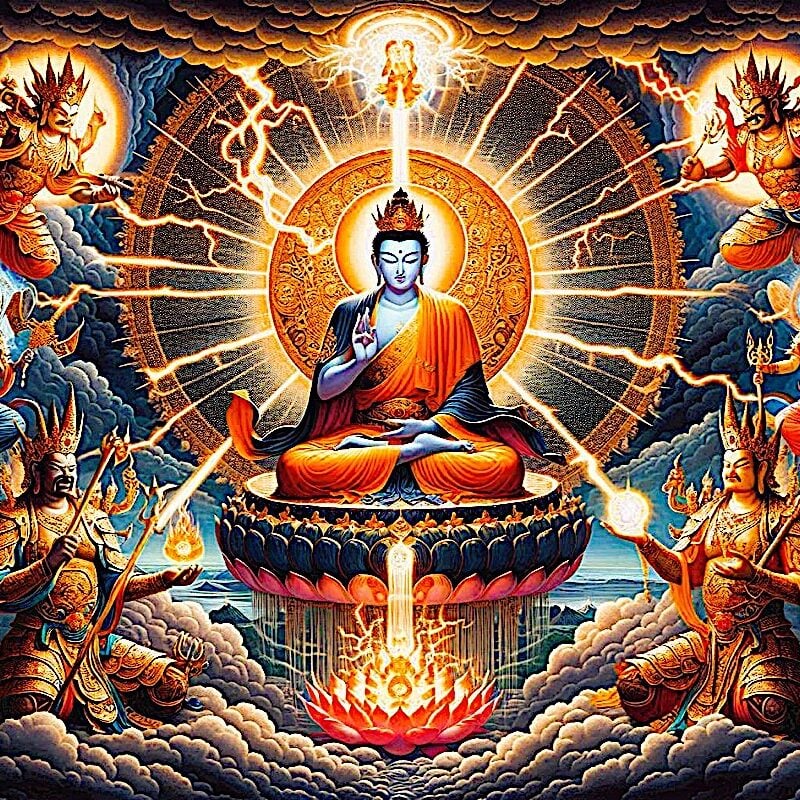
Protection from all Harm, Natural Disaster, Weather, Spirits, Evil, Ghosts, Demons, Obstacles: Golden Light Sutra: Chapter 14

Offering Light for Saga Dawa Duchen and the Month of Merits: Buddha’s Birthday, Enlightenment and Paranirvana 100 Million Merit Day
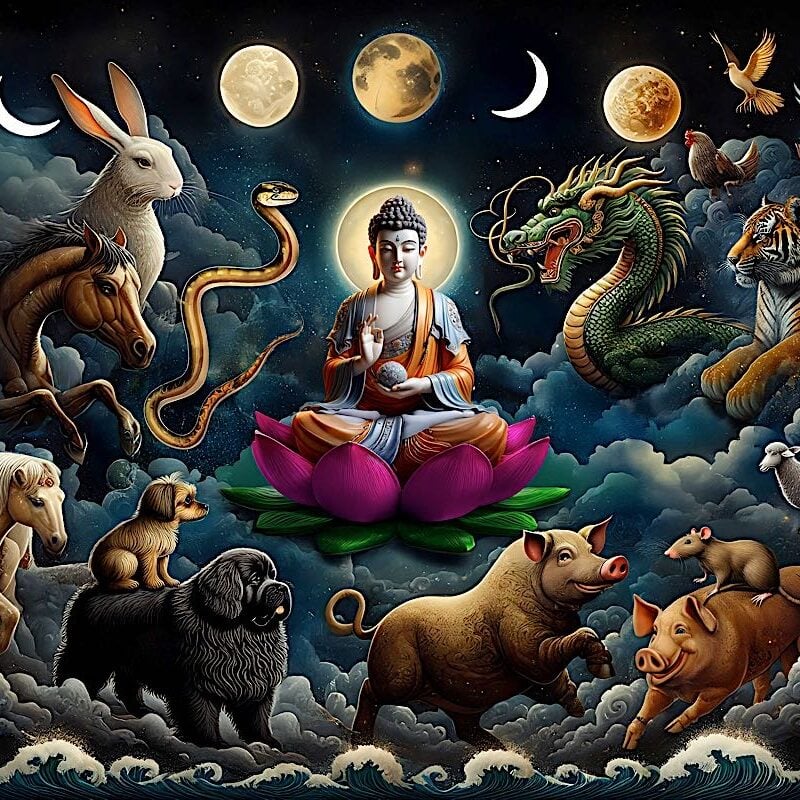
Who is my Enlightened Life Protector Based on Tibetan Animal Sign Zodiac in Buddhism? According to Mewa, Mahayana tradition and Kalachakra-based astrology (with Mantra Videos!)
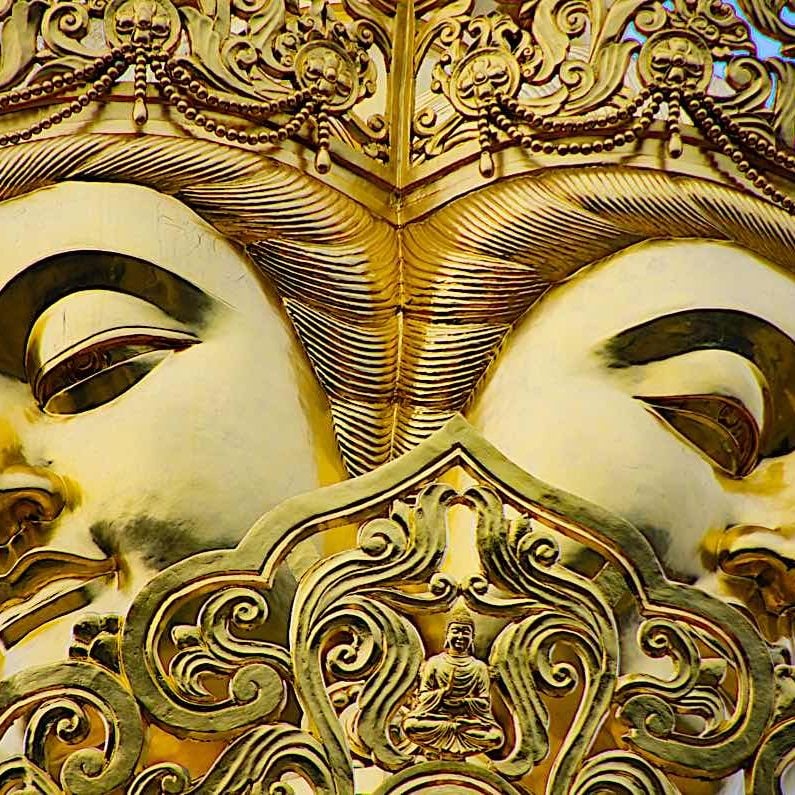
Samantabhadra’s The King of Prayers is the ultimate Buddhist practice how-to and itself a complete practice
Search
Latest Features
Please support the "Spread the Dharma" mission as one of our heroic Dharma Supporting Members, or with a one-time donation.
Please Help Support the “Spread the Dharma” Mission!

Be a part of the noble mission as a supporting member or a patron, or a volunteer contributor of content.
The power of Dharma to help sentient beings, in part, lies in ensuring access to Buddha’s precious Dharma — the mission of Buddha Weekly. We can’t do it without you!
A non-profit association since 2007, Buddha Weekly published many feature articles, videos, and, podcasts. Please consider supporting the mission to preserve and “Spread the Dharma." Your support as either a patron or a supporting member helps defray the high costs of producing quality Dharma content. Thank you! Learn more here, or become one of our super karma heroes on Patreon.
Lee Kane
Author | Buddha Weekly
Lee Kane is the editor of Buddha Weekly, since 2007. His main focuses as a writer are mindfulness techniques, meditation, Dharma and Sutra commentaries, Buddhist practices, international perspectives and traditions, Vajrayana, Mahayana, Zen. He also covers various events.
Lee also contributes as a writer to various other online magazines and blogs.






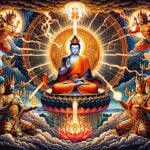

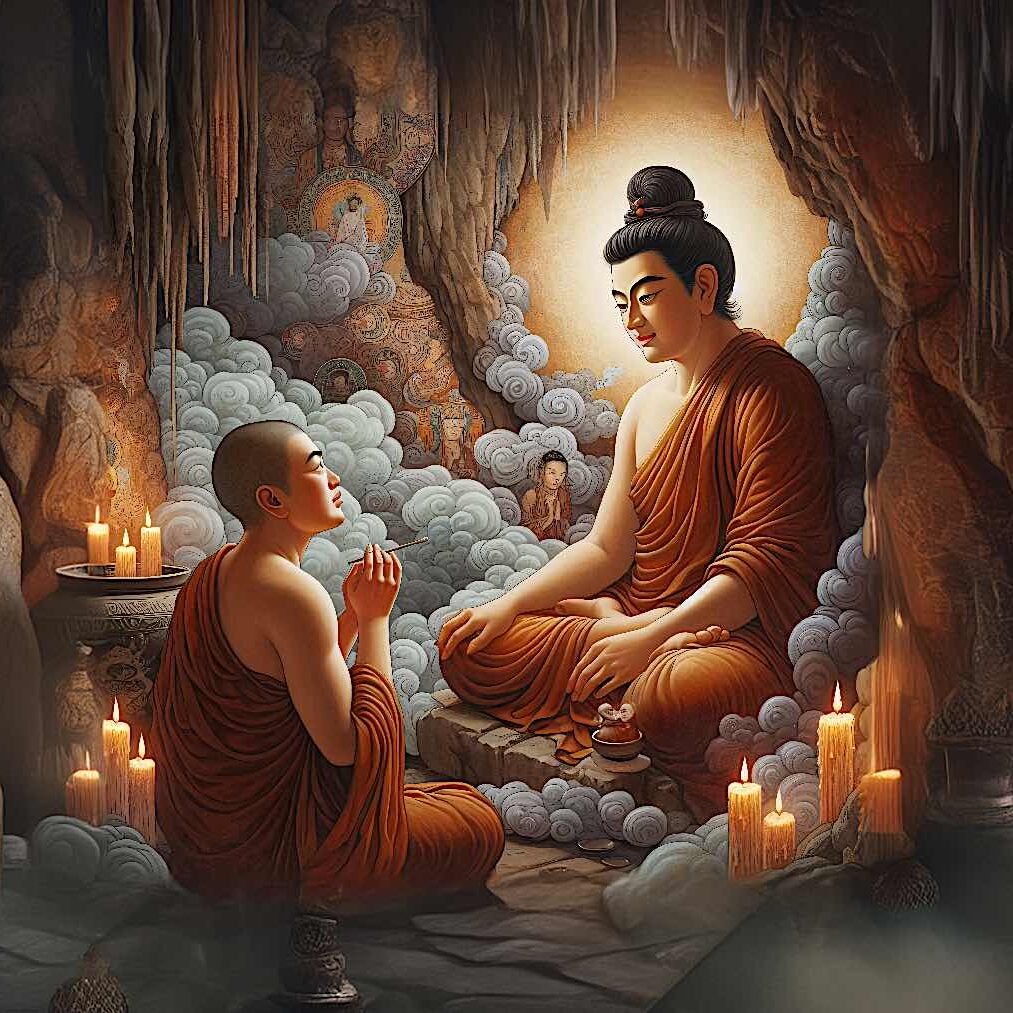
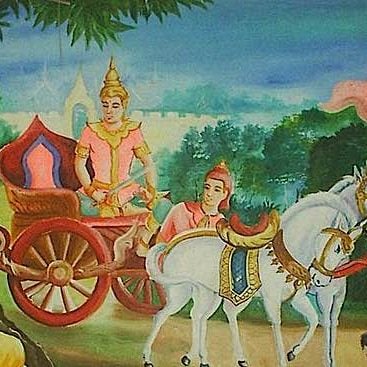





Very interesting essay on an important sutra!